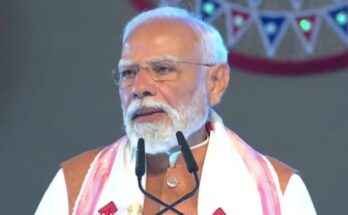By Taponeel Mukherjee
The Reserve Bank of India decided to hold repo rates unchanged in its meeting on December 5, 2019. In this context, apart from the outlook on inflation, the crucial area of focus should be the “transmission mechanism” of the rate cuts already delivered in 2019. In common parlance, “transmission mechanism” can be interpreted as the chain effect of rate cuts being passed on to the inter-related and inter-linked sectors in the overall ecosystem, to both lower the cost of credit and increase the availability of credit. Primarily, raise the money supply. The concept of an effective “transmission mechanism” is vital for India, both within the context of monetary policy and in the broader contexts of investments, capital flow and effective policymaking. The transmission of monetary policy, capital flows and
information must be all improved.
Within the context of monetary policy, the transmission mechanism is vital to ensure that the cost of credit is being lowered even as more substantial quantities of credit become available. It is a no brainer, that as resources for purveying credit rises with the banks so does the availability of credit for consumers. From the perspective of resolving some of the impediments that the economy is currently facing, it is critical that the low rates are passed on through a lower cost of credit and more credit availability and that the cost of credit itself is lowered across the term structure of interest rates.
An increase in short-term liquidity at the short end of the interest rate curve will eventually translate into lower longer-term yields for all. While short-dated credit availability is of prime importance, a sustainable drop in credit costs in longer tenures will significantly help in providing impetus to the investment cycle. Basically, as the cost of credit drops for longer borrowing periods, potential investment projects become increasingly attractive, given that the cost of financing the projects declines relative to the potential investment return. This increasing attractiveness of projects relative to the cost of capital will be a prime mover in getting the private investment cycle to get going in full flow.
As mentioned above, the “transmission mechanism” must not be limited to just monetary policy but must focus on the concept of capital flows. Given the constant talk about how crucial private capital is to finance Indian infrastructure and the need global capital has for returns in a low-yield world, the essential point is that the “transmission mechanism” that allows global capital to flow truly and easily needs to be continuously improved.
Improving the “transmission mechanism” for capital flow is dependent on a variety of factors but significantly dependent on building investor trust through efficient capital flow templates. Mainly, expedited and precise project execution will be vital for India to create an effective transmission mechanism to generate significant capital flow.
In this regard, it is important to note that the efficient capital flow framework is as vital for international capital as it is for domestic capital. In fact, without domestic capital from both households and the private sector finding its way to finance the future businesses and infrastructure, international capital will be harder to come by. Effective transmission mechanisms are required for creating capital flow that can genuinely bridge the investment gap in India.
The answer to what promotes an efficient transmission mechanism of capital is not rocket science but essential. The primary factors are high contract enforcement, low bureaucracy and efficient courts of law. While the importance of these factors is well known, the governments both at the centre and the states must work together to deliver on the efficient transmission mechanisms required for efficient capital flow.
Beyond the financial implications and factors around transmission, effective transmission of both monetary policy and capital hinges upon trust that contracts will be honoured as per the law and speedy resolution of issues around contract enforcement will be provided for. For India to push ahead towards generating capital for both an investment and consumption upswing in the economy, and for continuously improving “transmission mechanisms” in the economy, a focus on the right policy in respect of “transmission mechanisms” is the need of the hour. Additionally, ensuring
that the policies that are implemented can create positive ripple effects in the economy is of equal importance. Transmitting the policy changes as far as possible within the value chain will be the real game-changer.
(The views expressed in this article are personal and that of the author. The author heads Development Tracks, an infrastructure advisory firm. You can contact him at taponeel.mukherjee@development-tracks.com or @Taponeel on Twitter)




